Table of Contents
The Mongolian flag, also known as the flag of Mongolia, holds a significant place in the nation’s history and culture. With its vibrant colors and meaningful symbolism, it represents the Mongolian identity and heritage. In this article, we will delve into the intriguing aspects of the Mongolia flag, its design, historical background, and the symbolism behind its elements.
The Mongolia flag features three vertical stripes, blue in the center flanked by two red stripes, with a golden Soyombo (a national emblem) on the left side of the blue stripe. The blue color symbolizes the eternal blue sky, while the red represents progress and prosperity. The Soyombo encompasses various symbols, each holding significance in Mongolian culture.
Mongolia Flag: Colors and Symbolism
- The flag of Mongolia features three vertical stripes, with the central blue stripe symbolizing the vast sky above the Mongolian steppe.
- The blue color reflects the importance of the sky in nomadic culture, and it’s often associated with eternity and purity.
- The red stripes symbolize progress, prosperity, and the vibrant energy of the Mongolian people.
- The Soyombo, a complex national emblem, represents various elements of Mongolian culture and history.
- The flag’s design reflects the nation’s aspirations, cultural heritage, and unity among the Mongolian people.
Flag of Mongolia

The flag stands as a powerful symbol that encapsulates the cultural significance and spirit of the nation. Its design consists of three vertical stripes, with the center stripe bearing a Soyombo symbol. The blue color symbolizes the vast, open sky, reflecting Mongolia’s epithet as the “Land of the Blue Sky”. The red stripes stand for progress and prosperity, honoring the evolution and growth of the Mongolian people. The Soyombo holds historical and cultural significance, containing elements that represent fire, sun, moon, earth, and water, embodying the essence of life and Mongolian cosmology.
The history of the flag is intertwined with Mongolia’s rich heritage and struggle for independence. Adopted on January 12, 1992, the flag represents the unity and aspirations of the Mongolian people.
Beyond its aesthetics, the flag from Mongolia carries deep symbolic meanings. The colors reflect the values and aspirations of the Mongolian people, symbolizing the vastness of the sky, progress, and prosperity. The Soyombo symbol represents a complex interplay of elements vital to life and holds immense historical and cultural significance in Mongolian tradition. It embodies Mongolia’s cultural heritage and serves as a reminder of the nation’s resilience and unity.
National Flag Etiquette and Protocol
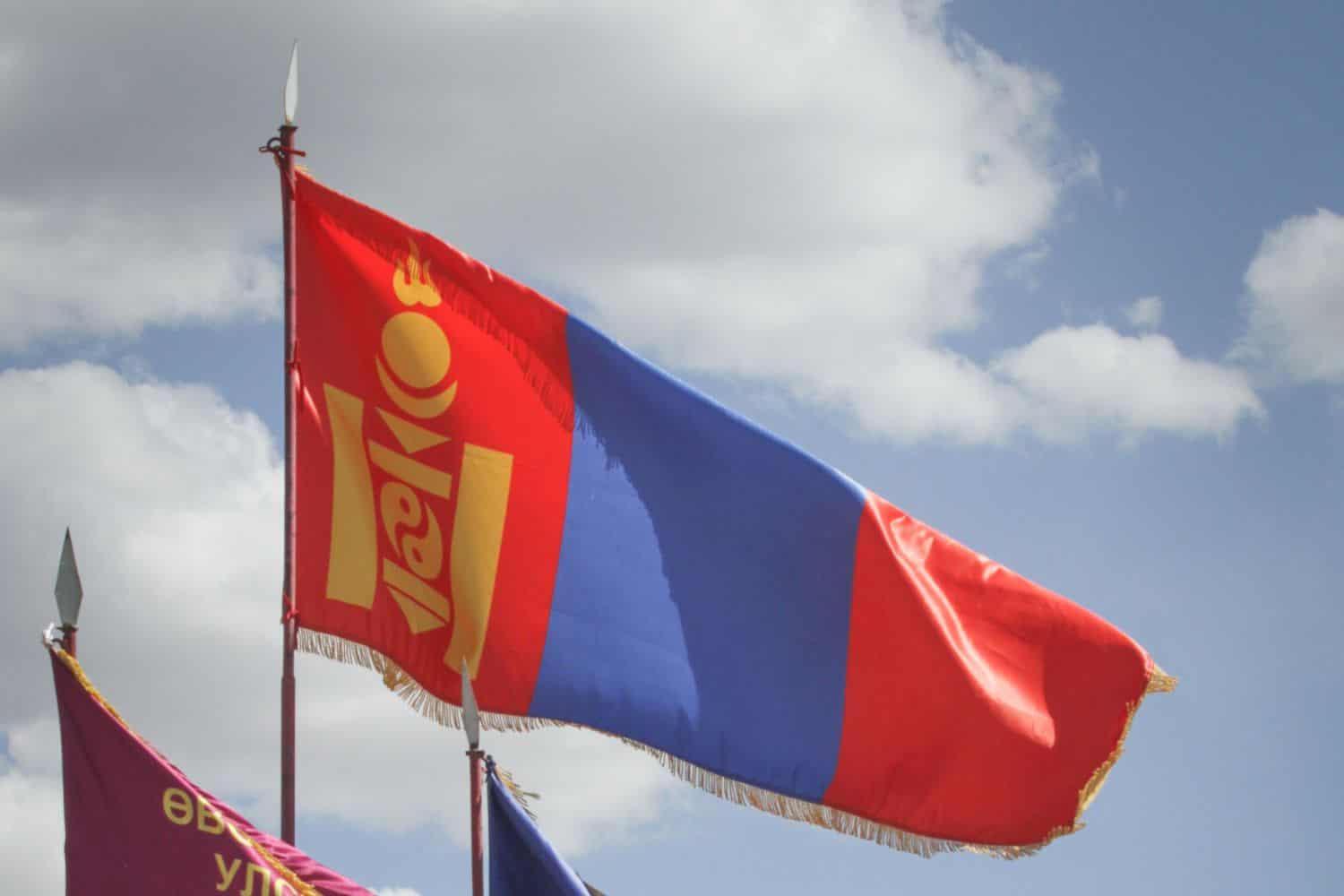
Respecting the proper usage and display of the Mongolian flag is of utmost importance. Understanding flag etiquette is essential, especially during national events and ceremonies. Learn about the protocols governing the handling, hoisting, and lowering of the flag. Discover the appropriate procedures for retiring or handling damaged flags, ensuring they are accorded the respect they deserve.
- Proper Handling: The Mongolian flag should be handled with care and respect, ensuring it is not allowed to touch the ground or floor. It should be held upright and not dragged.
- Hoisting and Lowering: When hoisting the flag, it should be raised briskly and lowered ceremoniously. It is customary to hoist the flag at sunrise and lower it at sunset, although this may vary depending on the occasion or specific guidelines.
- Half-Staff: Lowering the flag to half-staff is a gesture of mourning or respect. This should be done on specific days of remembrance or when directed by authorities to honor national tragedies or the passing of significant figures.
- Flag Retirement: When a Mongolian flag becomes damaged, torn, or worn out, it should be retired in a dignified manner. This can involve burning it in a respectful and solemn ceremony, following appropriate guidelines and local regulations.
- Flag Size and Placement: The size of the Mongolian flag displayed should be proportionate to the size of the flagpole or display area. It is recommended to consult local guidelines or authorities for specific rules regarding flag size and placement.
- Respectful Disposal: If a flag cannot be retired through burning, it should be disposed of in a respectful manner. This can involve burying it or handing it over to authorized organizations that specialize in flag disposal.
Interesting Facts and Trivia
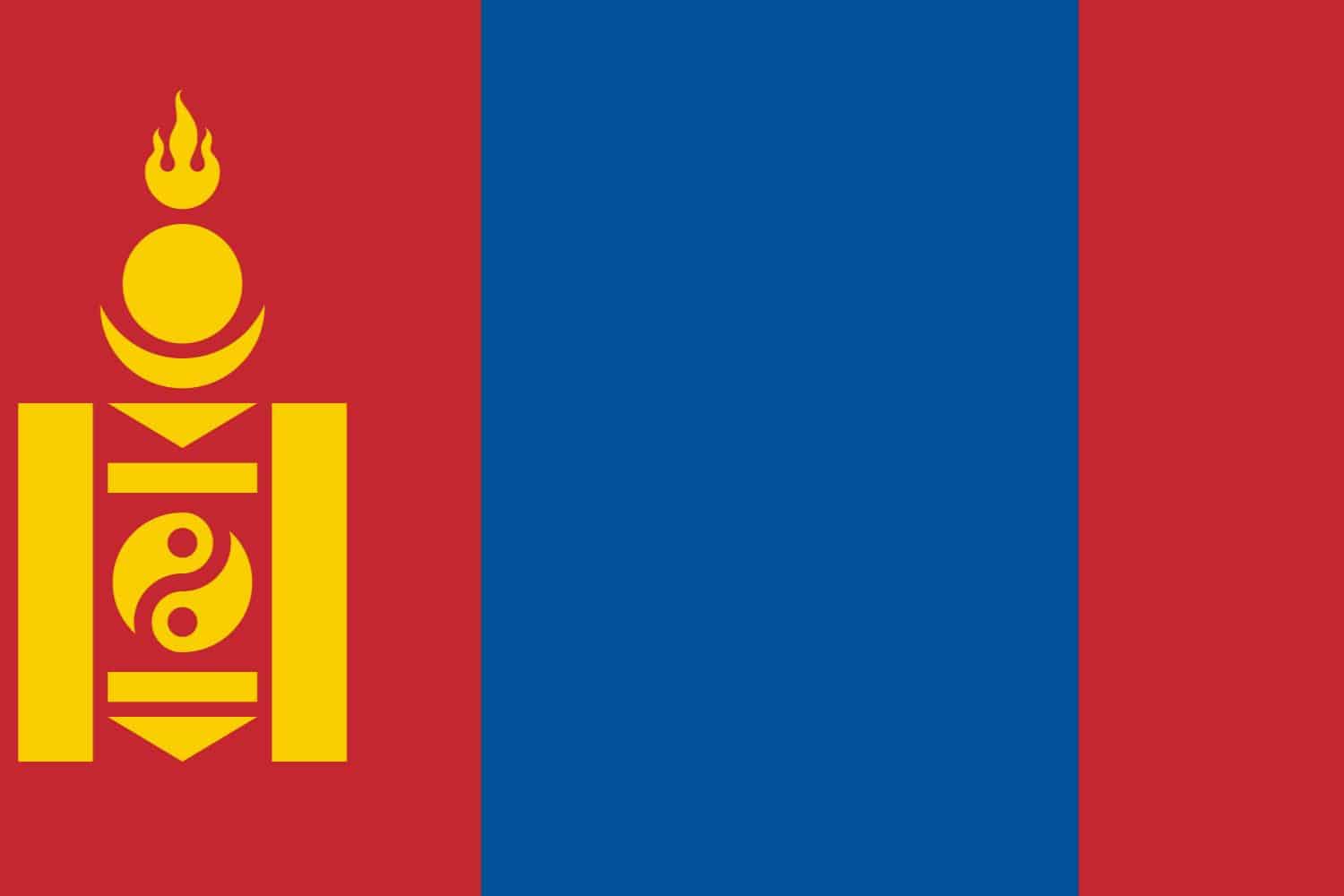
Embark on a journey of fascinating facts and lesser-known trivia about the Mongolian flag. Discover unique features within the flag’s design that hold hidden symbolism. Uncover stories of famous incidents or events involving the flag that have left an indelible mark on the nation’s history and identity.
Rich Tapestry of History
- 1915: The current flag of Mongolia is adopted on November 17, symbolizing the unity and aspirations of the Mongolian people.
- Colors and Symbolism: The red color represents bravery, valor, and sacrifices made by the Mongolian people, while the blue color symbolizes the eternal blue sky, which is significant in Mongolian culture.
- Soyombo Symbol: The emblem found on the flag holds historical and cultural significance in Mongolian tradition. It consists of various elements that represent fire, the sun, the moon, earth, water, and the Taijitu symbol, which are crucial to Mongolian beliefs.
- National Identity: The flag embodies Mongolia’s rich history, cultural heritage, and the nation’s ongoing pursuit of unity, prosperity, and renewal.
These historical facts highlight significant moments in the history of the Mongolian flag, showcasing its role in shaping Mongolia’s national identity and symbolizing its struggles and aspirations throughout the years.
Flag-Related Symbols and Emblems
A flag is not alone in representing the nation’s identity. Explore additional national symbols and emblems closely associated with Mongolia, understanding their significance and how they relate to the flag. Delve into their historical and cultural roots, further enriching your understanding of Mongolia’s heritage. It’s easy to travel and make a Mongolia tour to visit the country’s best destinations.
Symbolisms of the Mongolia Flag
the flag of Mongolia holds several symbolic elements that represent the nation’s history, values, and aspirations. Here are the symbolisms of the Mongolian flag presented in itemized form:
- Blue Color: This represents the eternal blue sky that is a significant aspect of the Mongolian cosmogony, symbolizing purity, truth, and the open-minded nature of the Mongolian people.
- Red Color: Symbolizes thriving and progress, reflecting the strength and courage of Mongolia’s citizens throughout history.
- Soyombo Symbol: Situated on the red stripe closest to the flagstaff, this columnar symbol holds deep historical and cultural significance, embodying the philosophy, religious beliefs, and national identity of Mongolia.
- Flag’s Design: Reflects Mongolia’s spiritual reverence for the sky and the valor of its citizens, marking the cultural heritage and the unity amongst Mongolian people.
- National Identity: The flag serves as a powerful symbol that unifies the Mongolian people, reminding them of their shared heritage and cultural identity, deeply intertwined with the natural elements represented on the flag.
- National Aspirations: Through its design and elements, the flag embodies the aspirations and values of the Mongolian nation, including courage, purity, and a deep connection with the cosmos, derived from its historical reliance on nomadic herding and a close relationship with nature.
These symbolisms in the flag contribute to the country’s sense of identity and pride, reflecting its historical journey and cultural significance.
Flags of Similar Countries or Regions
Exploring the flags of Mongolia’s neighboring countries or regions can offer fascinating revelations. This exploration can delve into similarities and differences in design, colors, or symbolism, highlighting historical or cultural ties, as well as individual national identities through the lens of these flags.
Mongolian Flag vs Chinese Flag
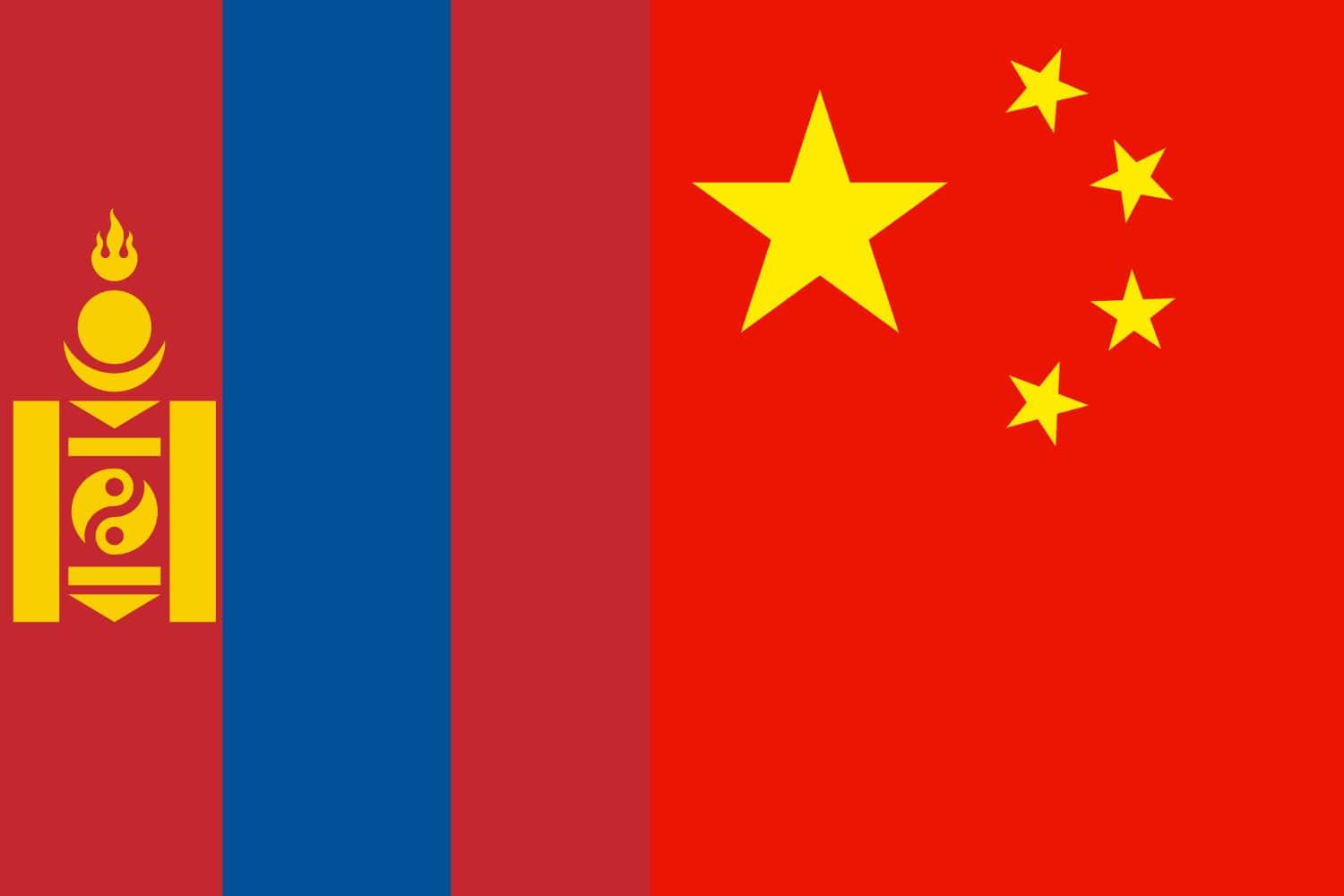
Similarity: Both flags feature the color red, representing vigor and bravery.
Difference: The Mongolian flag incorporates blue stripes and a Soyombo symbol on the hoist side, while the Chinese flag features five yellow stars, with one large star surrounded by four smaller stars in the canton.
Mongolian Flag vs Russian Flag
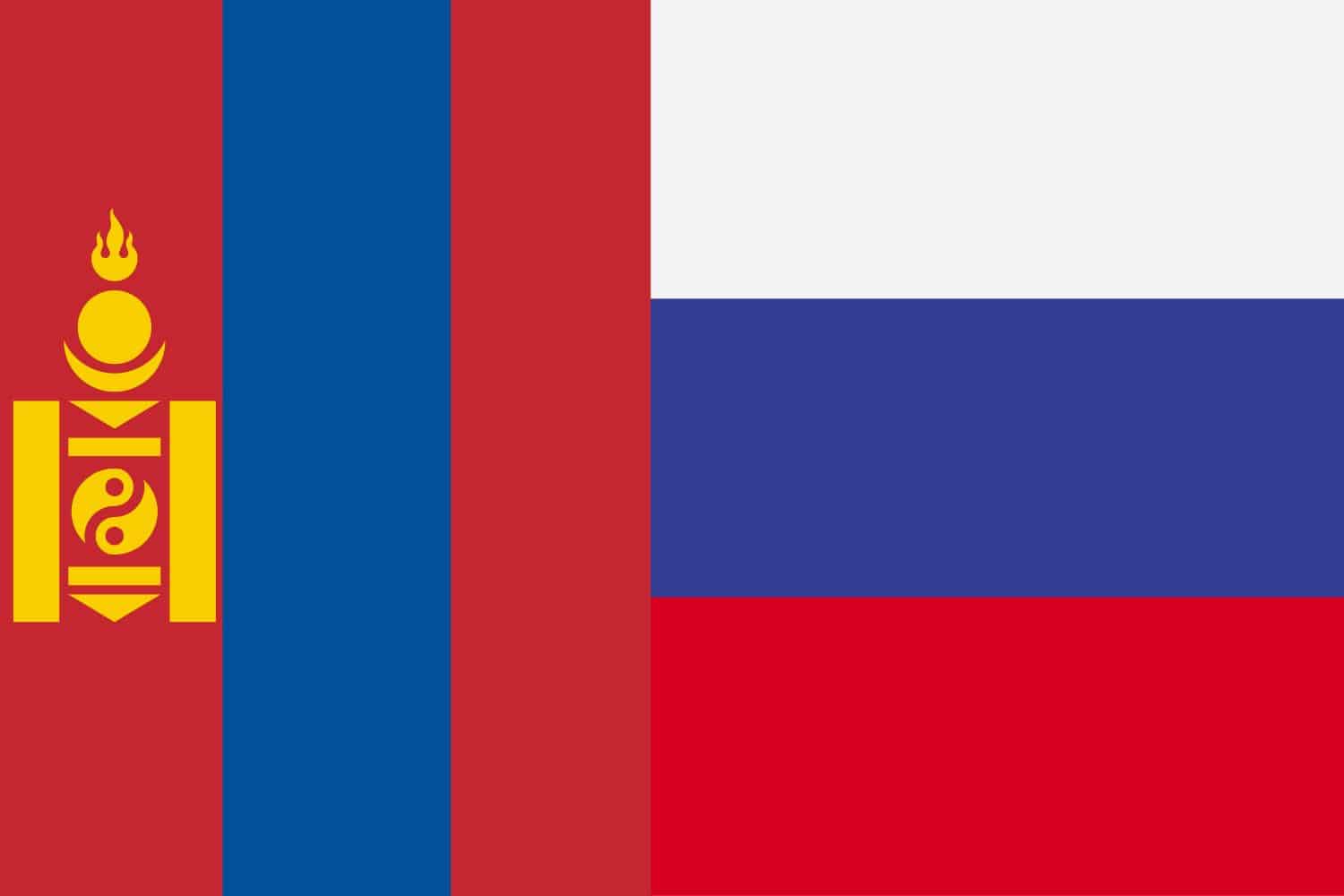
Similarity: Both flags utilize bold primary colors in their designs, with red being a common color in both flags.
Difference: The Russian flag follows a horizontal tricolor pattern of white, blue, and red stripes. In contrast, the Mongolian flag has a unique vertical pattern with red stripes framing a central blue stripe containing the Soyombo symbol.
Mongolian Flag vs Kazakh Flag
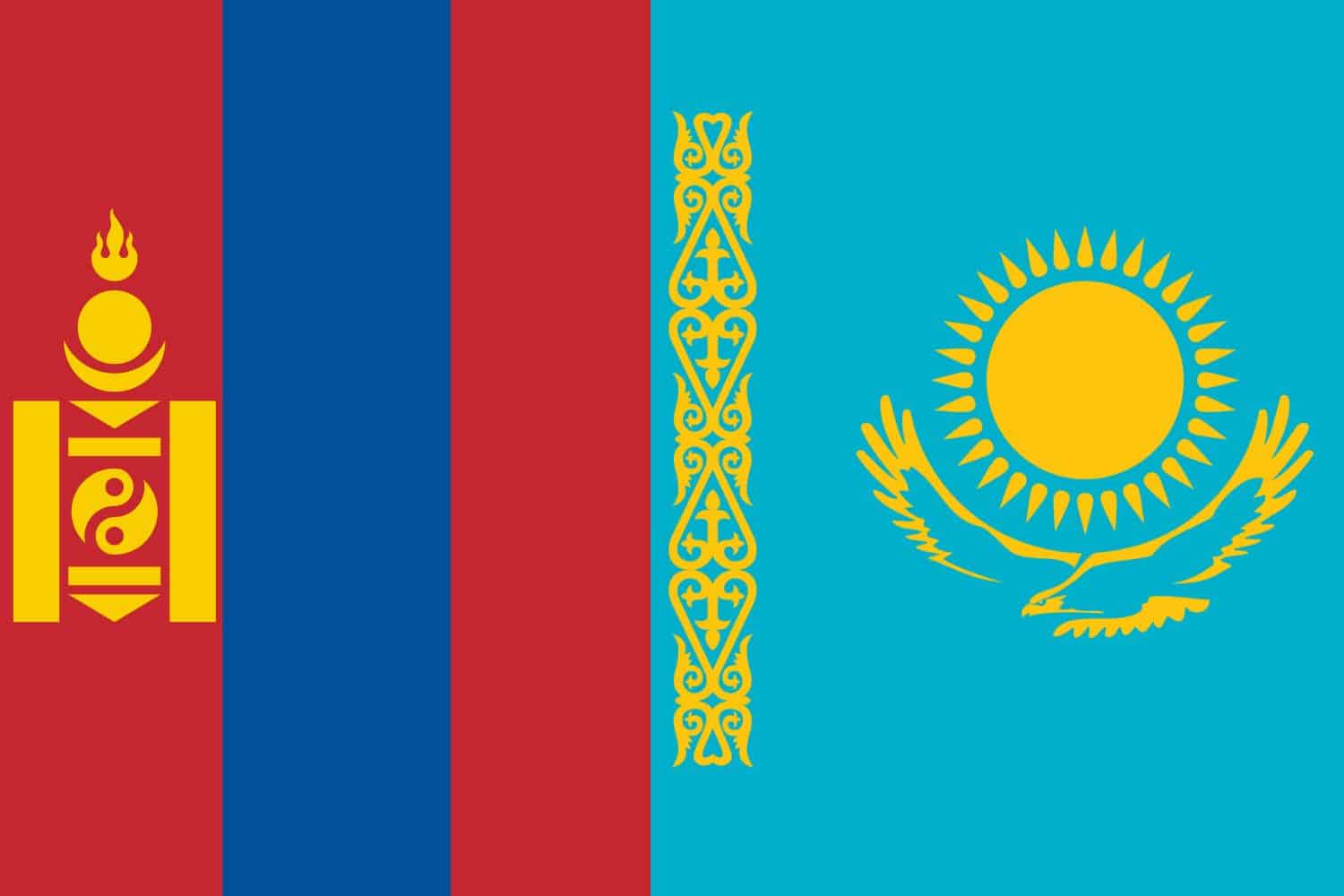
Similarity: Both flags use a dominant blue color, which symbolizes the sky and the people’s aspirations toward peace and stability.
Difference: The Mongolian flag has a vertical arrangement with a Soyombo symbol on the hoist side, while the Kazakh flag features a golden sun with 32 rays above a golden steppe eagle in the fly side on a sky-blue field.
Mongolian Flag vs Kyrgyz Flag
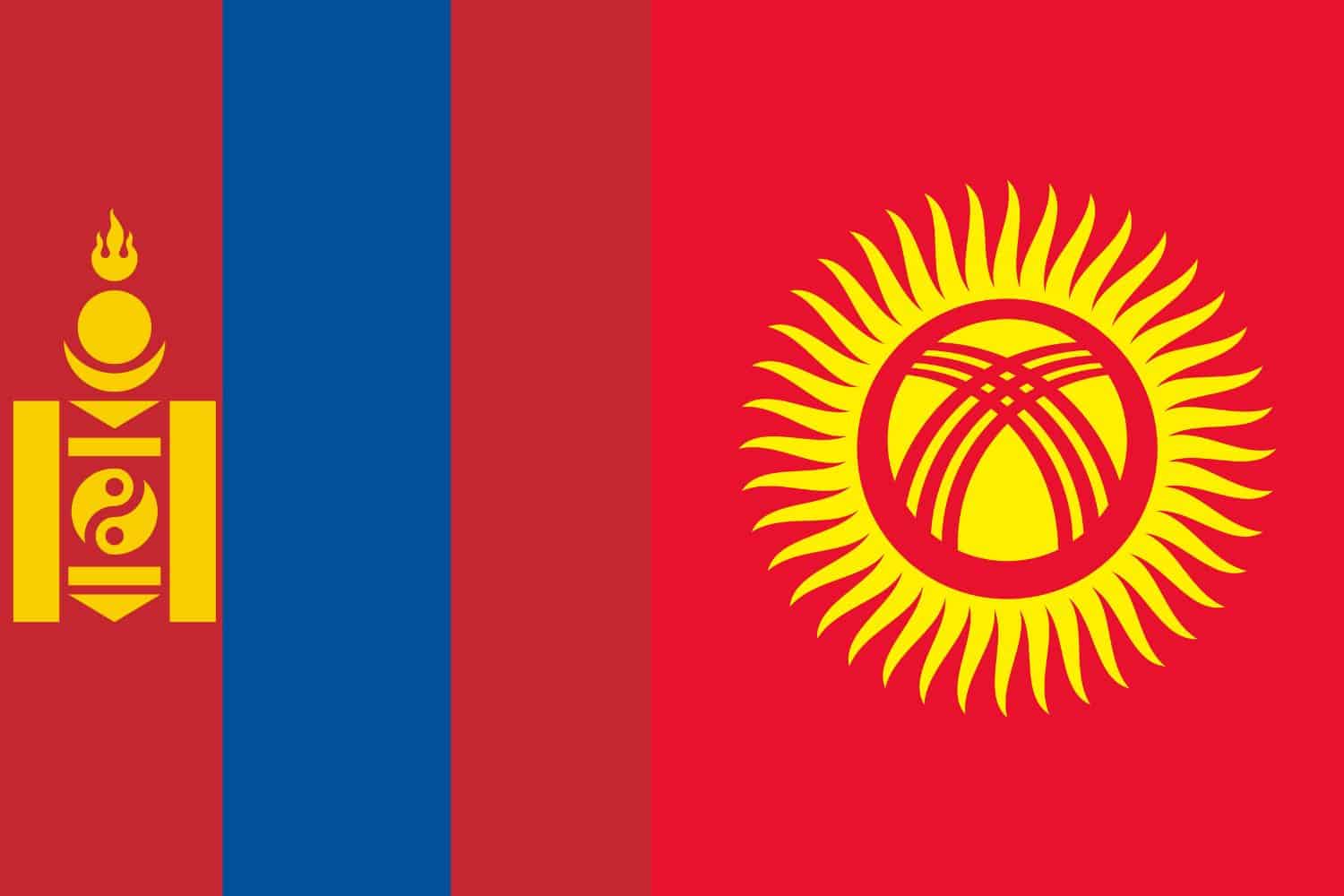
Similarity: Both flags bear a dominant red color which may symbolize bravery and valor.
Difference: The Mongolian flag features blue stripes and the Soyombo symbol, whereas the Kyrgyz flag has a yellow stylized sun with forty uniformly spaced rays in the center, containing three crossed lines in the middle representing the tunduk of a yurt.
Mongolian Flag vs North Korean Flag

Similarity: Both flags share the color red to symbolize revolutionary traditions.
Difference: The Mongolian flag displays the Soyombo symbol on a vertical blue stripe, flanked by red stripes, while the North Korean flag consists of a central wide red stripe bordered by white and blue stripes with a white circle containing a red star on the hoist side.
Mongolian Flag vs Japanese Flag
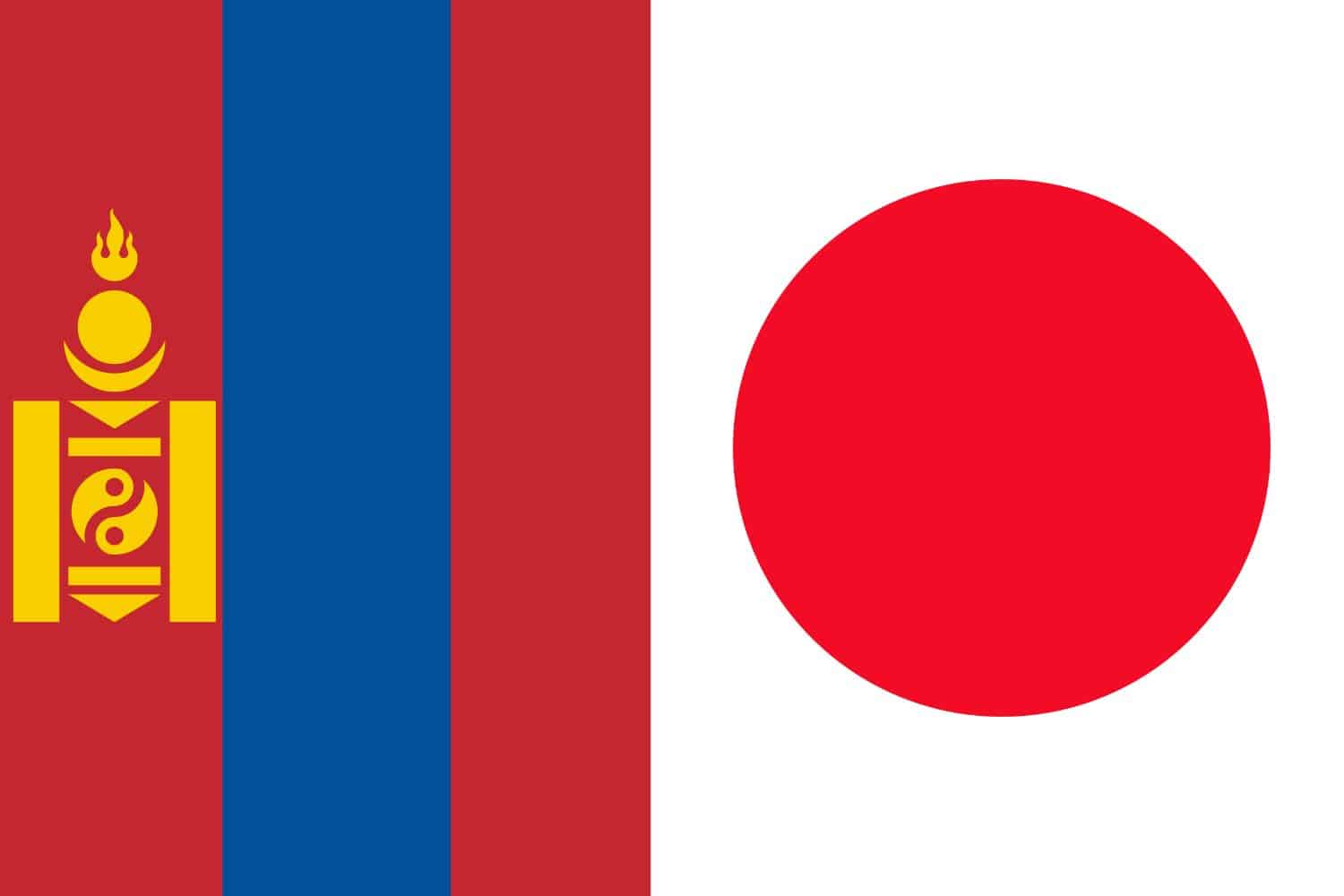
Similarity: Both flags use a minimalist design, emphasizing simplicity and balance.
Difference: While the Mongolian flag highlights the Soyombo symbol flanked by blue and red stripes, the Japanese flag opts for a plain white field with a red circle representing the sun in the center.
Frequently Asked Questions (FAQs)
Discover answers to common questions related to the Mongolia flag picture. From its historical origins to the symbolism behind its elements, find concise and informative responses that address inquiries commonly posed by those curious about Mongolia’s flag.
When was the current flag of Mongolia adopted?
The current flag was officially adopted on January 12, 1992, after the end of the socialist era.
What do the colors on the Mongolian flag represent?
The blue stripe symbolizes the eternal blue sky, central to the Mongolian worldview. The two red stripes signify Mongolia’s ability to thrive in the harsh environment, and they are also reminiscent of Mongolia’s socialist past.
What is the Soyombo symbol on the flag?
The Soyombo is a unique Mongolian emblem that has several representations, such as fire, sun, moon, earth, water, and the yin-yang symbol. It is an ancient symbol of freedom, independence, and protection.
Has the design of the Mongolian flag changed over the years?
Yes, while the basic colors and the Soyombo symbol have remained consistent, the flag has undergone various modifications, especially during the socialist era.
Who designed the current flag of Mongolia?
The current design was a result of national deliberations after the fall of socialism. The Soyombo symbol, however, is ancient and has been used in Mongolia for centuries.
Is it true that the flag had a star above the Soyombo during the socialist era?
Yes, during Mongolia’s socialist period (1924-1992), the flag featured a star above the Soyombo, symbolizing socialism’s influence.
How should the flag be displayed during national events?
The flag should be displayed with the blue stripe facing upwards and the Soyombo symbol oriented correctly, with the flame pointing upwards.
How often is the flag flown in Mongolia?
The flag is flown daily across various institutions in Mongolia. It is particularly prominent during national celebrations like Naadam and the Lunar New Year.
Are there any specific flag protocols or etiquettes in Mongolia?
Like many countries, Mongolia has etiquette for flag handling and display. It should not touch the ground, be displayed upside down, or be used in a manner that disrespects the nation.
What do the individual components of the Soyombo symbolize?
The Soyombo contains multiple elements: the flame represents growth and regeneration, the sun and the moon symbolize the universe, the triangles point to the arrow and spear, defending against external enemies, the horizontal rectangles signify honesty and justice, and the yin-yang symbol indicates the harmony of male and female energies.
More About Mongolia
[the-post-grid id=”50398″ title=”Mongolia Main page”]
